Periodontal Disease
Periodontal disease is a process in which bacteria and plaque induce an inflammatory process of the gums and supporting tissue of the tooth. The signs we notice most often are bad breath and reddened gums.
Untreated gingivitis will progress to periodontitis - the inflammatory responses that involve the supporting bone and tooth root. The end result of periodontitis is loss of the teeth due to loss of supporting bone.
Inflamed gums also provide bacteria with easy access to the blood stream where they can travel to infect major organs such as the heart and kidneys.
Stage 0: Healthy Teeth & Gums
- Gum margin flat and pink
- Scalloped gum edge against the teeth
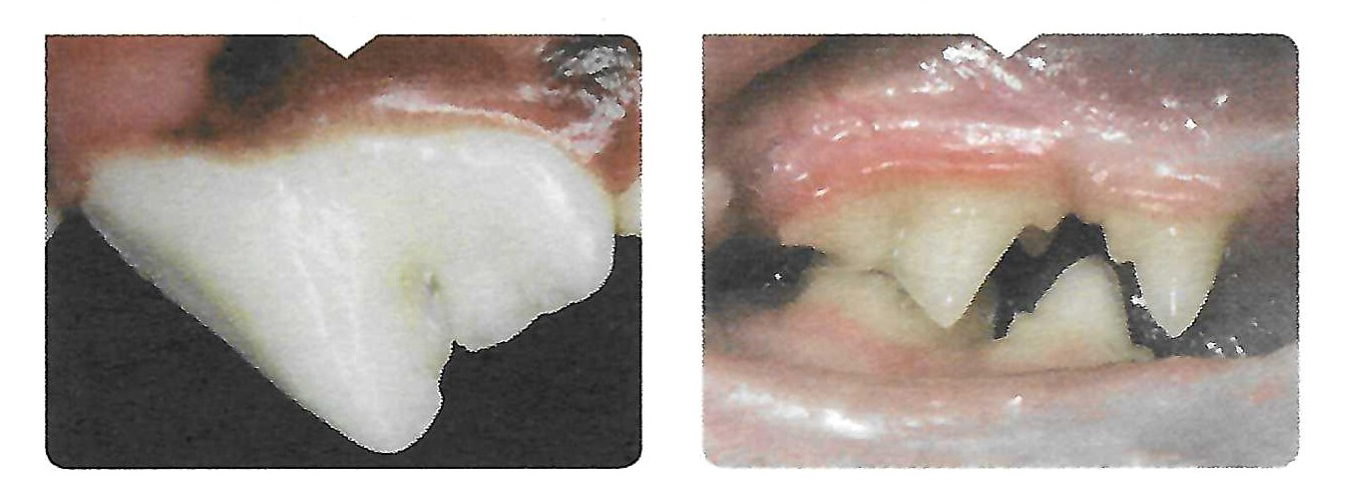
Stage 1: Gingivitis
- Gum (gingiva) inflamed and swollen
- Tartar present
- Can be reversed with professional dental cleaning and home dental care
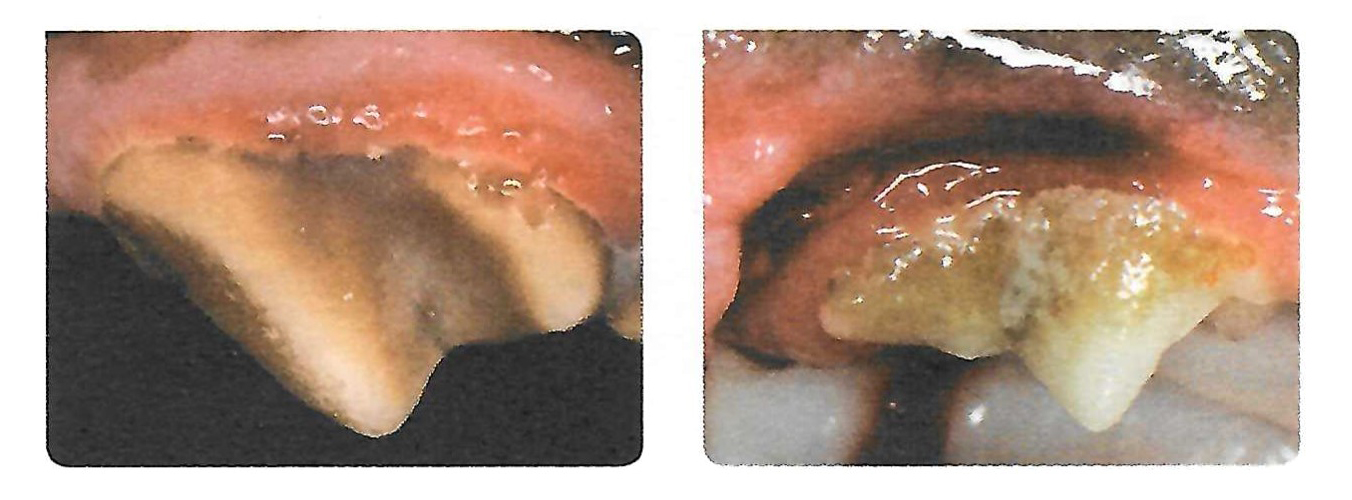
Stage 2: Advanced Gingivitis
- Tooth starts to lose support due to bone loss
- Bad breath, tartar present, inflamed/swollen gums
- Can prevent worsening with professional treatement and home dental care
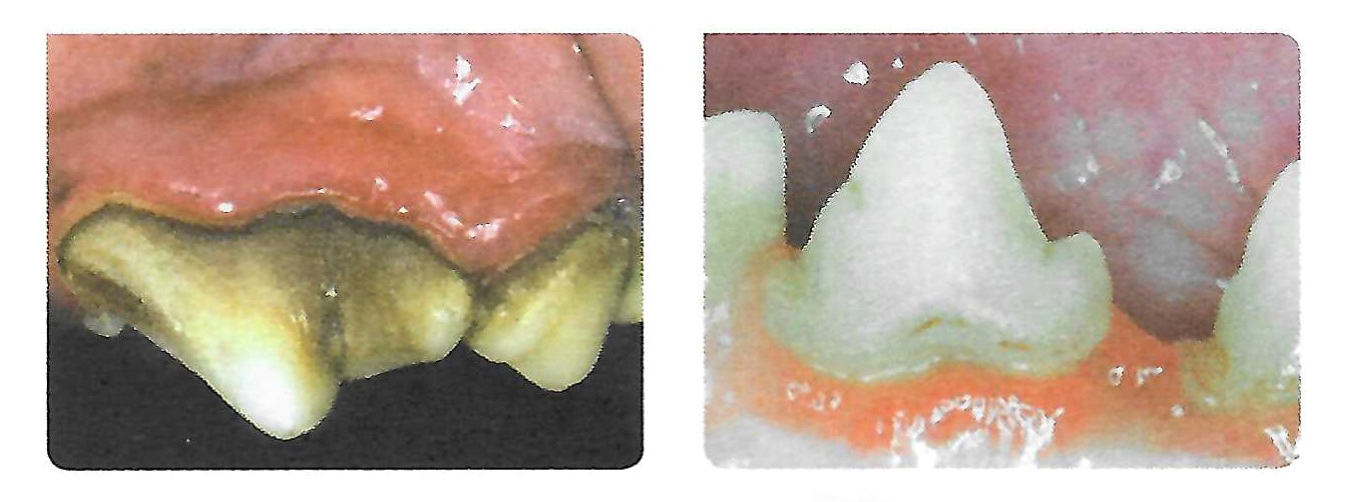
Stage 3: Periodontitis
- Painful mouth, loose teeth, bad breath, tartar present, inflamed/swollen gums
- Tooth support worsens due to more bone loss
- Professional exam and xrays needed
- Advanced treatment is likely with extractions and/or bone grafts needed
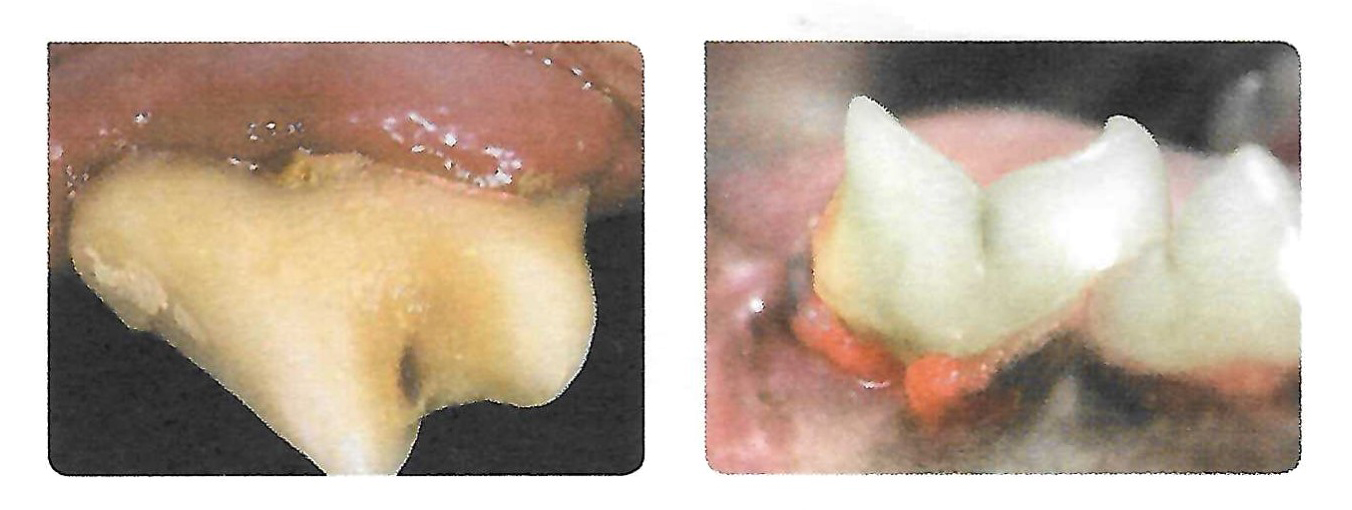
Stage 4: Advanced Periodontitis
- Gum recession, painful mouth, loose teeth, bad breath, tartar present, inflamed/swollen gums
- Tooth extraction required. It is possible that most, if not all, teeth need removed for patient health and comfort.
- Advanced bone loss results in little to no tooth support
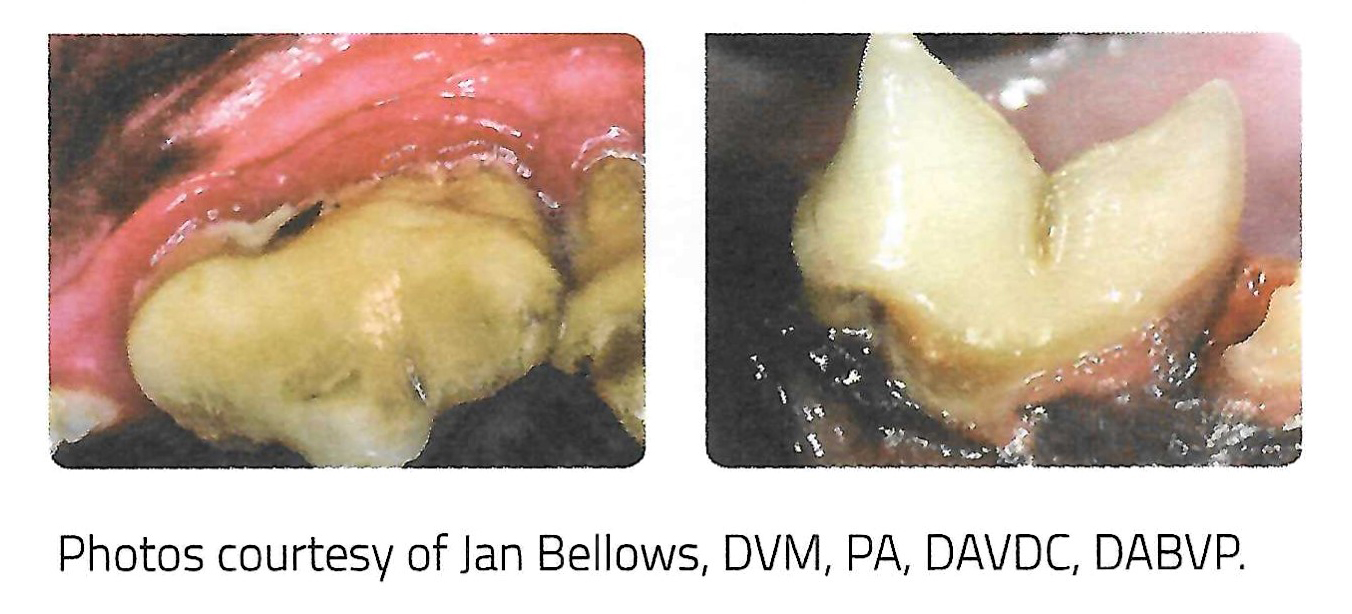
| 






